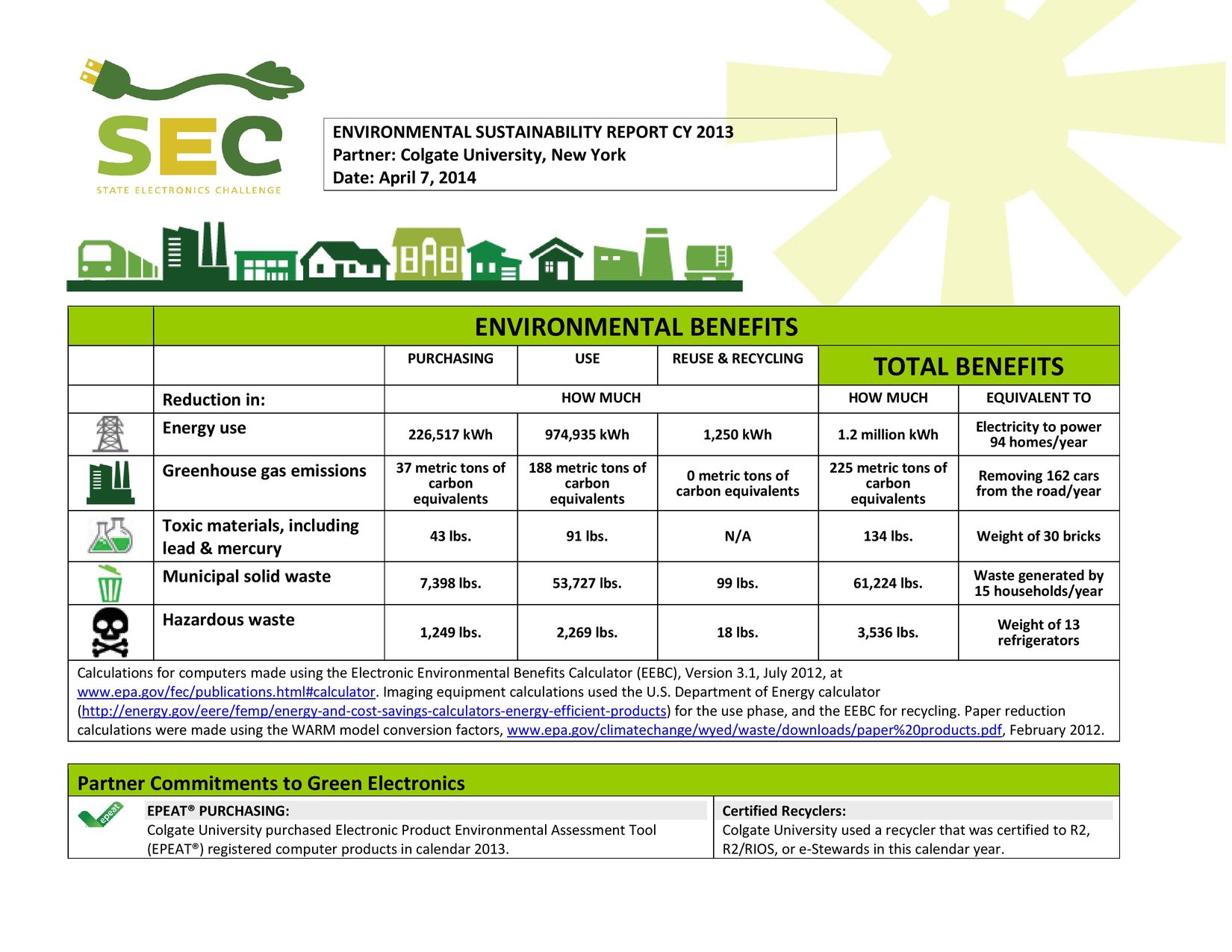By Sammi Leroy ’14
In 2007, New York’s Public Service Commission (PSC) set forth a new Energy Efficiency Portfolio Standard (EEPS), declaring that the city needed to reduce its electricity usage by 15% from projected usage in 2015. A frenzy of activity resulted: program targets were established, utilities joined city and state public service providers in developing programs to incentivize lighting upgrades and citizens were mobilized to spread the word about this ambitious electricity reduction goal.
I was one of those citizens.
After my sophomore year at Colgate, I interned with a start-up called Envirolution down in New York City, where I was trained to do basic lighting audits and ROI and payback assessments. I pounded the pavement with other interns, educating small business owners about the incentives they would receive if they chose to upgrade their lights and how such an upgrade would not only benefit their bottom line but also reduce the city’s overall greenhouse gas (GHG) emissions and electricity usage. Overall, our message was received with curiosity and genuine interest. I was empowered both by the message I was spreading and my ability to teach others something so vital to the resilience of the city. It was that summer that I witnessed first hand, for the first time, the power of policy.
Ever since, I have kept an eye on our federal government. What policies have federal officials developed to protect our climate and increase energy efficiency? Unfortunately, not many. The issue of climate change has become deeply politicized, polarizing our Congress and preventing the creation of legislation that mandates the decrease of GHGs or increases the efficiency of resource consumption.
After having made promises in his inaugural address and most recent state of the union to address climate change, President Obama has gone it alone. In October of 2009, President Obama signed Executive Order (EO) 13514, “Federal Leadership in Environmental, Energy, and Economic Performance.” As its title suggests, this EO requires federal agencies to increase the efficiency of their operations, thereby enhancing their performance and setting an example for state and municipal governmental agencies. Then, in November of 2013, President Obama signed EO 13653, “Preparing the United States for the Impacts of Climate Change.” Primarily, this EO instructs federal agencies to take measures that make it easier for American communities to implement preparedness and adaptation programs. In June of 2013, the Obama Administration released the President’s Climate Action Plan (PCAP), a plan more robust than any made in history to address climate change. The plan is three-pronged: cut carbon pollution in America, prepare the United States for the impacts of climate change, and lead international efforts to combat global warming and prepare for its impacts. Finally, in late March, the Obama administration announced plans to look into cutting methane emissions across the country.
But is it enough to move mountains?
No doubt these policies have mobilized the federal agencies, which have contracted the help of many public and private organizations to assist in meeting reduction targets. “Since 2008, federal agencies have reduced GHG pollution by more than 15 percent – the equivalent of permanently taking 1.5 million cars off the road” (Climate Action Plan interactive). However, as all EOs go, Obama’s are vulnerable to the individual who takes over the White House after his term is up in 2016, and there’s no saying whether they will be upheld. The legislature remains extremely divided on the issue and has shown little support for Obama’s initiatives. Only time will tell whether or not the federal government reaches the goals the Obama administration has set. In the meanwhile, we wait with baited breath for Obama’s decision on the Keystone Pipeline and new developments in the methane project.





